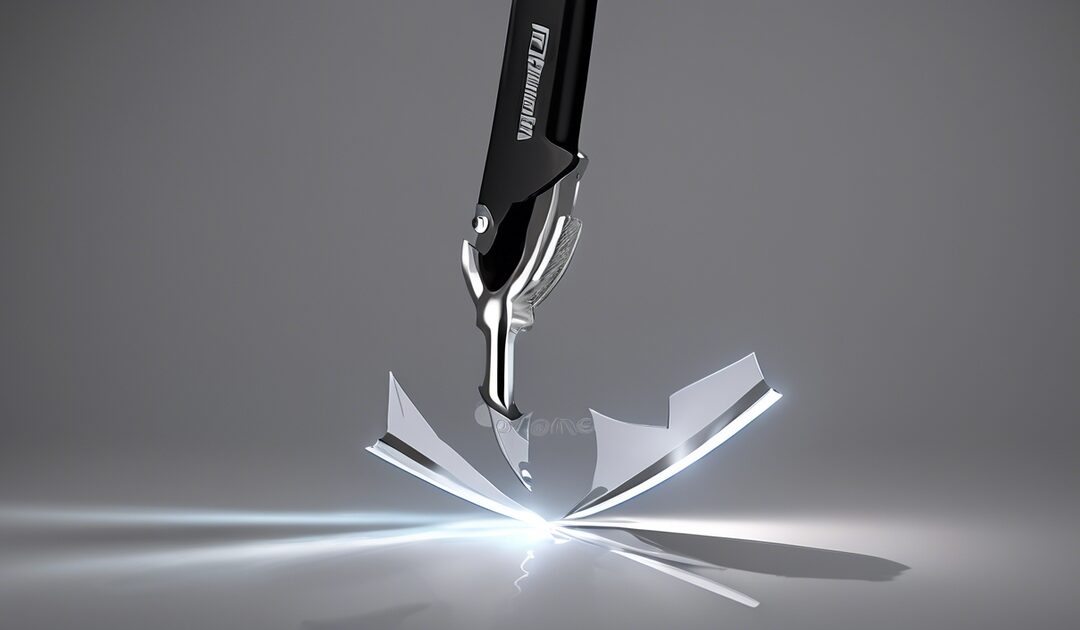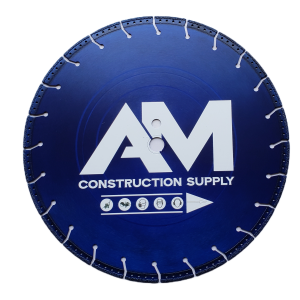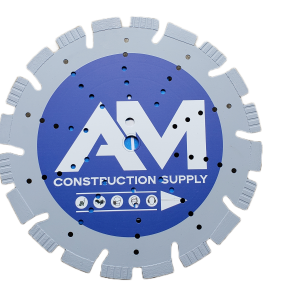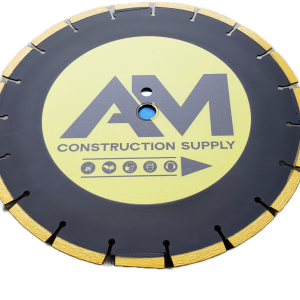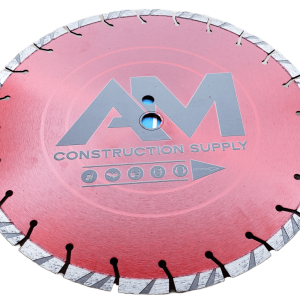In the world of blade width and cutting efficiency, understanding their relationship is crucial. The historical context reveals how advancements in blade technology have transformed the way we approach cutting tasks. From the early days of rudimentary tools to today’s precision-engineered blades, the evolution has been remarkable. Exploring how different blade widths impact cutting efficiency can provide valuable insights for various applications. Stay tuned as we delve into this intricate connection, figure out the key factors that influence cutting performance, and explore the saws’ tensioning side.
Key Takeaways
- Choose the Right Blade Width: Selecting the appropriate blade width for your bandsaw can significantly impact cutting efficiency.
- Regular Maintenance is Key: Ensuring proper maintenance of your bandsaw blades can enhance their performance and longevity.
- Optimize Power Settings: Adjusting power requirements according to the cutting task can improve efficiency and blade longevity.
- Maximize Bandsaw Performance: Understanding bandsaw blade geometry and making informed choices can optimize cutting results.
- Efficient Lumber Manufacturing: Implementing efficient bandsaw practices can streamline lumber manufacturing processes and increase productivity.
- Quality Diamond Blades Matter: Investing in high-quality diamond blades can elevate cutting efficiency and overall performance.
Understanding Blade Efficiency
Cutting Dynamics
Blade width significantly impacts cutting dynamics. A wider blade tends to provide more stability during cutting tasks, reducing vibrations and enhancing overall control. This stability leads to smoother cuts and increased cutting efficiency.
Different blade widths offer varying levels of cutting efficiency. Thinner blades excel in intricate cuts and curves, ideal for detailed work like crafting or delicate woodworking. In contrast, wider blades are more suited for straight cuts on thicker materials due to their enhanced stability.
The relationship between blade width and cutting precision is crucial. While wider blades offer stability, they may sacrifice precision in intricate cuts compared to narrower blades. Precision decreases as the blade width increases, making it essential to choose the right blade width based on the specific cutting requirements.
Blade Geometry Basics
Understanding blade geometry is fundamental for achieving efficient cutting results. Blade geometry refers to the shape and design of the blade’s edge, which directly impacts its cutting performance. Different blade widths influence the geometry of cuts by altering how the material is severed.
Blade width plays a vital role in determining the angle at which the blade interacts with the material being cut. Wider blades have a larger surface area in contact with the material, affecting the force distribution during cutting. This altered force distribution can impact factors such as chip formation and material removal rates.
It’s essential to grasp how blade width affects geometry to optimize cutting processes. By selecting the appropriate blade width for a specific task, one can enhance cutting precision, reduce material waste, and improve overall efficiency in various applications.
Power Needs
Power requirements vary depending on blade width variations. Wider blades generally demand more power due to increased resistance against the material being cut. The additional power needed for wider blades is necessary to maintain consistent cutting speeds and prevent stalling.
Comparing power needs for different blade widths reveals insights into operational costs and equipment capabilities. Thinner blades typically require less power, making them suitable for applications where energy efficiency is a priority. Conversely, wider blades may consume more power but offer advantages in terms of stability and productivity.
Blade width directly influences power consumption during cutting operations. Operators must consider both the desired cutting outcomes and available power resources when selecting an optimal blade width for a given task.
Choosing the Right Blade Width
Material Considerations
Blade width significantly impacts material choice for cutting, determining the efficiency and effectiveness of the process. Different blade widths are suitable for various materials, ensuring optimal results and prolonging blade life. For instance, thinner blades are ideal for intricate cuts on delicate materials like paper or fabric.
When selecting a blade width, it’s crucial to consider the compatibility with the material being cut. Thicker blades are better suited for dense materials such as hardwood or metal, providing stability and durability during cutting. The relationship between blade width and material compatibility is crucial in achieving clean and precise cuts.
Cutting Speed
Blade width plays a crucial role in determining cutting speed, directly affecting overall efficiency. Wider blades tend to cut faster due to their larger surface area making contact with the material. However, this increased speed may come at the expense of precision, especially when dealing with intricate designs or detailed cuts.
The correlation between blade width and cutting efficiency is evident in various cutting applications. Narrower blades offer higher precision but might sacrifice speed, whereas wider blades prioritize speed over precision. Finding the right balance between cutting speed and blade width is essential to achieve desired outcomes efficiently.
Precision and Quality
Precision in cutting is heavily influenced by the chosen blade width, impacting the accuracy of cuts. Thinner blades allow for more intricate cuts, suitable for detailed designs or curved patterns that require finesse. On the other hand, wider blades excel in straight cuts on thicker materials where precision is less critical.
The quality of cuts is closely tied to blade width, with different widths producing varying results. Thicker blades may leave rougher edges, especially on delicate materials, while thinner blades provide cleaner finishes. Techniques such as adjusting cutting pressure or speed can help maintain precision regardless of blade width.
Bandsaw Blade Geometry Explained
Width and Thickness
Blade width and thickness are crucial factors in bandsaw blade geometry. Blade width determines the capacity of a blade to make curved cuts efficiently. On the other hand, blade thickness influences the stability of the blade during cutting operations.
When it comes to cutting efficiency, blade width plays a significant role in determining the type of cuts a bandsaw can make. A wider blade is more suitable for straight cuts and resawing tasks due to its stability. Conversely, a narrower blade excels at intricate curved cuts because of its maneuverability.
In contrast, blade thickness affects cutting accuracy by influencing the amount of material removed during each pass. Thicker blades are more stable and less prone to deflection, resulting in precise cuts. However, thinner blades produce less waste material and are better suited for intricate designs.
Tooth Design
Tooth design is intricately linked to blade width in bandsaw blades. The tooth configuration directly impacts cutting performance and efficiency based on the type of material being cut. For instance, blades with fewer teeth per inch (TPI) are ideal for faster cutting speeds but may result in rougher finishes.
The relationship between blade width and tooth design is essential for optimizing cutting efficiency. Wider blades accommodate larger tooth sizes, enabling them to handle thicker materials effectively. In contrast, narrower blades work best with smaller teeth for intricate cuts on thinner materials.
An optimized tooth design enhances the overall cutting process by ensuring proper chip removal and reduced friction during operation. Blades with varied tooth patterns such as hook, skip, or raker teeth offer versatility in handling different materials and cutting requirements effectively.
Power Requirements for Efficient Cutting
Motor Strength
Blade width plays a crucial role in determining the motor strength needed for efficient cutting. A wider blade requires a more powerful motor to maintain optimal cutting speed and precision. The motor must generate sufficient torque to handle the increased resistance posed by a wider blade.
When selecting a bandsaw blade, it’s essential to consider the motor’s horsepower rating to ensure it can effectively drive the wider blade through various materials. The relationship between blade width and motor strength is directly proportional – as the blade width increases, the motor strength requirements also rise.
Blade Width Impact
The blade width directly impacts cutting efficiency by influencing the stability, accuracy, and speed of the cutting process. A wider blade provides better stability during cutting, reducing vibrations and enhancing precision. Moreover, it can withstand higher feed rates without deflecting, leading to smoother cuts.
Choosing the right blade width is critical for different cutting tasks. For intricate cuts that require tight curves or detailed work, a narrower blade is preferred for enhanced maneuverability. Conversely, thicker materials or straight cuts benefit from a wider blade due to its ability to maintain rigidity and reduce the risk of bending or breaking during cutting operations.
Maximizing Bandsaw Performance
Proper Blade Maintenance
Blade maintenance is crucial for optimizing cutting efficiency, with practices varying based on blade width. For narrow blades, regular inspection is essential to prevent warping and ensure precise cuts. On the other hand, wider blades require more frequent tension adjustments to maintain accuracy.
Challenges arise when dealing with different blade widths, such as increased wear on narrower blades and potential tracking issues with wider ones. To overcome these challenges, operators must adhere to manufacturer guidelines for tensioning and alignment specific to each blade width.
To ensure longevity, operators should regularly clean blades to prevent pitch buildup and inspect teeth for damage. Using the appropriate lubricant can extend blade life by reducing friction during cutting operations.
Adjusting for Optimal Use
Achieving optimal performance with bandsaws involves making adjustments tailored to the blade width being used. When switching between narrow and wide blades, it’s crucial to recalibrate the saw’s tension settings to accommodate the new blade’s requirements accurately.
Calibration requirements differ depending on the blade width due to variations in flex and stiffness. Operators must adjust feed rates and cutting speeds accordingly to prevent premature wear or breakage of the blade.
Techniques for adjusting tools include modifying guide settings and ensuring proper tracking alignment. For narrow blades, guides should be set closer to reduce deflection, while wider blades require wider guide clearances to prevent binding during operation.
-
Pros of Proper Blade Maintenance:
- Extends blade life
- Ensures accurate cuts
- Prevents premature wear
-
Cons of Improper Maintenance:
- Reduced cutting efficiency
- Increased risk of accidents
- Higher replacement costs
Efficient Use of Bandsaws in Lumber Manufacturing
Selecting Blades
When choosing a blade for efficient sawing, the blade width plays a crucial role. Different widths cater to various cutting tasks. Factors like cumulative sawing length and wood type influence the ideal blade width selection.
To ensure optimal performance, consider the material’s thickness and hardness when selecting a blade width. Narrow blades are suitable for intricate cuts, while wider ones excel in straight cuts on thicker wood. Understanding these distinctions aids in maximizing bandsaw efficiency.
Operational Tips
For narrow blades, prioritize accuracy over speed. Adjust the feed rate to prevent blade deflection and ensure clean cuts. Wider blades offer stability for straight cuts but may struggle with intricate designs. Regularly check blade tension and alignment to maintain cutting precision.
- Pros: Narrow blades provide precision for detailed cuts, while wider blades offer stability for straight cuts.
- Cons: Narrow blades may deflect if not fed properly, and wider blades can be challenging for intricate designs.
Tailor operational techniques based on the selected blade width to enhance cutting efficiency. When using narrow blades, focus on controlling the feed rate to avoid blade drift. Conversely, leverage the stability of wider blades by adjusting the cutting speed accordingly.
Incorporate periodic maintenance checks into your operational routine to prolong blade life and ensure consistent performance. Adjust blade guides and tension regularly, especially when transitioning between different widths. This practice minimizes downtime and maximizes productivity.
Importance of Maintenance
Regular Checkups
Blade width significantly impacts cutting efficiency in bandsaws. Regular checkups are crucial to maintain optimal performance. Different blade widths require specific maintenance schedules. For narrow blades, more frequent inspections are necessary to prevent premature wear and tear. On the other hand, wider blades may need less frequent but thorough examinations.
When it comes to routine inspections, the checklist should include checking for blade tension, alignment, and sharpness. Narrow blades often require more tension adjustments due to their flexibility. Wider blades might need alignment checks to ensure they track correctly on the wheels.
Replacement Strategy
Developing a replacement strategy is vital based on the wear patterns of varying blade widths. Thinner blades tend to wear out faster due to increased flexing during operation. Thicker blades may last longer but can experience more severe damage if not replaced promptly.
Indicators such as blunt teeth or visible cracks signal the need for replacement. Thin blades are prone to tooth dulling quicker than wider ones due to higher stress concentration. Cracks are more common in wider blades due to the larger surface area exposed to cutting forces.
-
Pros:
- Optimal cutting performance
- Prolongs blade lifespan
-
Cons:
- Increased maintenance frequency
- Higher replacement costs
Why Choose Quality Diamond Blades
Superior Performance
Blade width significantly impacts cutting performance. Wider blades tend to cut faster but may lack precision compared to narrower ones. Evaluating cutting performance involves considering factors like speed, accuracy, and versatility. Different blade widths offer varying levels of each aspect.
When it comes to superior performance, blade width plays a crucial role. Wider blades are ideal for heavy-duty tasks that prioritize speed over precision. In contrast, narrow blades excel in intricate cuts requiring high accuracy. Selecting the right width depends on the specific cutting needs.
-
Pros:
- Faster cutting speed
- Suitable for heavy-duty tasks
- Versatile in various applications
-
Cons:
- May lack precision
- Limited suitability for intricate cuts
Durability and Longevity
Durability varies based on blade width. Thicker blades are generally more durable but might sacrifice speed. Thinner blades, while offering higher precision, are prone to wear quicker under intense use. The lifespan of a blade is directly influenced by its width.
Blade width affects the longevity of cutting tools due to wear and tear differences between various widths. To enhance durability, proper maintenance is crucial regardless of the blade width used. Regular cleaning, sharpening, and storage practices can prolong the lifespan of diamond blades.
-
Factors affecting durability:
- Blade material
- Intensity of use
- Maintenance routine
-
Tips for enhancing longevity:
- Proper storage to prevent damage
- Regular cleaning to remove debris
- Sharpening when necessary
Final Remarks
You’ve now grasped the vital connection between blade width and cutting efficiency, understanding how to optimize your bandsaw’s performance. By choosing the right blade width, considering bandsaw blade geometry, power requirements, and the importance of maintenance, you’re set to maximize your cutting efficiency. Remember, quality diamond blades are a smart investment for long-term productivity and precision in your cutting tasks.
o ahead and apply these insights to boost your bandsaw’s effectiveness and get those clean cuts effortlessly. Keep in mind that regular maintenance and using the appropriate blade width for your specific cutting needs will make all the difference in achieving top-notch results. Now it’s your turn to take action and elevate your cutting game!
Frequently Asked Questions
How does blade width affect cutting efficiency?
Blade width directly impacts cutting efficiency. A wider blade provides stability for straight cuts and resists deflection, ideal for thick materials. On the other hand, a narrower blade offers precision for intricate cuts but may struggle with thicker materials.
What factors should be considered when choosing the right blade width?
Consider the type of material you are cutting, the desired cut quality, and the intricacy of cuts needed. For thick materials or straight cuts, opt for a wider blade. For intricate designs or curved cuts, a narrower blade is more suitable.
Why is bandsaw blade geometry important for efficient cutting?
Bandsaw blade geometry determines how effectively the blade can cut different materials. Factors like tooth pitch, gullet size, and tooth set impact cutting performance. Understanding these geometrical aspects helps optimize cutting efficiency and prolong blade life.
How can one maximize bandsaw performance in woodworking projects?
To maximize bandsaw performance, ensure proper blade tension, alignment, and speed settings according to the material being cut. Regularly maintain and lubricate the bandsaw to prevent premature wear and ensure clean, accurate cuts throughout woodworking projects.
Why is maintenance crucial for bandsaw performance?
Regular maintenance ensures that your bandsaw operates at its best capacity. It helps prevent premature wear on blades and components while ensuring safety during operation. Proper maintenance also extends the lifespan of your equipment and maintains consistent cutting quality.

